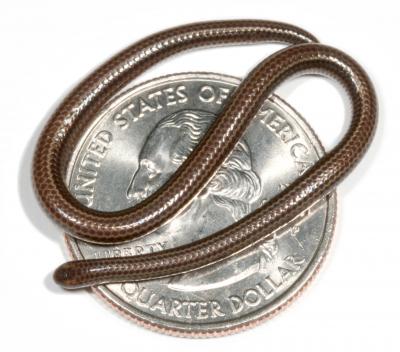|
Letheobia Rufescens
''Letheobia rufescens'', also known as the Oubangui gracile blind snake or Haut-Oubangui beaked snake, is a species of snake in the family Typhlopidae. It is endemic to Central Africa ( Central African Republic and northern Democratic Republic of the Congo). References Further reading * Chabanaud, P. 1916. ''Énumération des Ophidiens non encore étudiés de l'Afrique occidentale, appartenent aux Collections de Muséum, avec la description des espèces et des variétés nouvelles''. Bulletin du Muséum national d'histoire naturelle. Volume 22, pp. 362–382. Letheobia Snakes of Africa Reptiles of the Central African Republic Reptiles of the Democratic Republic of the Congo Reptiles described in 1916 Taxa named by Paul Chabanaud {{Scolecophidia-stub ... [...More Info...] [...Related Items...] OR: [Wikipedia] [Google] [Baidu] |
Paul Chabanaud
Paul Chabanaud (30 November 1876, in Versailles – 27 February 1959) was a French ichthyologist and herpetologist. Beginning in 1915, he worked as a volunteer under zoologist Louis Roule at the '' Muséum National d'Histoire Naturelle'' in Paris. In 1919–1920, he undertook a scientific expedition to French West Africa ( Senegal, Guinea) on behalf of the museum, during which he collected thousands of zoological specimens. Following his return to Paris, he served as a preparator in the laboratory of biologist Jean Abel Gruvel at the museum. He specialized in the anatomy and systematics of the flatfish (order Pleuronectiformes) and was the taxonomic authority of many herpetological and ichthyological species. [...More Info...] [...Related Items...] OR: [Wikipedia] [Google] [Baidu] |
Van Wallach
Van Stanley Bartholomew Wallach (born 1947) is an American herpetologist and an expert on blindsnakes and on the systematics, internal anatomy, and taxonomy of snakes. He has contributed to the descriptions of at least 46 species of snakes and has conducted fieldwork on tropical snakes in the Philippines, Nicaragua, and the Democratic Republic of the Congo. For many years Wallach worked as a Curatorial Assistant at the Museum of Comparative Zoology at Harvard University in Cambridge, Massachusetts. He retired from the museum in 2012, but he continues to work on snake taxonomy. Wallach was the lead editor of the 1,227 page authoritative reference book ''Snakes of the World''. In the 2000s Wallach was one of several herpetologists who became embroiled in a dispute with Raymond Hoser, a self-published Australian herpetologist, over proper nomenclatorial acts. Hoser charged Wallach with attempting to name species that Hoser had already described in his self-published journal. Wallach ... [...More Info...] [...Related Items...] OR: [Wikipedia] [Google] [Baidu] |
Snake
Snakes are elongated, limbless, carnivorous reptiles of the suborder Serpentes . Like all other squamates, snakes are ectothermic, amniote vertebrates covered in overlapping scales. Many species of snakes have skulls with several more joints than their lizard ancestors, enabling them to swallow prey much larger than their heads ( cranial kinesis). To accommodate their narrow bodies, snakes' paired organs (such as kidneys) appear one in front of the other instead of side by side, and most have only one functional lung. Some species retain a pelvic girdle with a pair of vestigial claws on either side of the cloaca. Lizards have evolved elongate bodies without limbs or with greatly reduced limbs about twenty-five times independently via convergent evolution, leading to many lineages of legless lizards. These resemble snakes, but several common groups of legless lizards have eyelids and external ears, which snakes lack, although this rule is not universal (see Amphisbae ... [...More Info...] [...Related Items...] OR: [Wikipedia] [Google] [Baidu] |
Typhlopidae
The Typhlopidae are a family of blind snakes. They are found mostly in the tropical regions of Africa, Asia, the Americas, and all mainland Australia and various islands. The rostral scale overhangs the mouth to form a shovel-like burrowing structure. They live underground in burrows, and since they have no use for vision, their eyes are mostly vestigial. They have light-detecting black eye spots, and teeth occur in the upper jaw. Typhlopids do not have dislocatable lower jaw articulations restricting them to prey smaller than their oral aperture. The tail ends with a horn-like scale. Most of these species are oviparous. Currently, 18 genera are recognized containing over 200 species. Geographic range They are found in most tropical and many subtropical regions all over the world, particularly in Africa, Asia, islands in the Pacific, tropical America, and southeastern Europe. Fossil record Possible Typhlopid skin has been identified in Dominican amber. Genera Type genus For ... [...More Info...] [...Related Items...] OR: [Wikipedia] [Google] [Baidu] |
Endemism
Endemism is the state of a species being found in a single defined geographic location, such as an island, state, nation, country or other defined zone; organisms that are indigenous to a place are not endemic to it if they are also found elsewhere. For example, the Cape sugarbird is found exclusively in southwestern South Africa and is therefore said to be ''endemic'' to that particular part of the world. An endemic species can be also be referred to as an ''endemism'' or in scientific literature as an ''endemite''. For example ''Cytisus aeolicus'' is an endemite of the Italian flora. ''Adzharia renschi'' was once believed to be an endemite of the Caucasus, but it was later discovered to be a non-indigenous species from South America belonging to a different genus. The extreme opposite of an endemic species is one with a cosmopolitan distribution, having a global or widespread range. A rare alternative term for a species that is endemic is "precinctive", which applies t ... [...More Info...] [...Related Items...] OR: [Wikipedia] [Google] [Baidu] |
Central Africa
Central Africa is a subregion of the African continent comprising various countries according to different definitions. Angola, Burundi, the Central African Republic, Chad, the Democratic Republic of the Congo, the Republic of the Congo, Equatorial Guinea, Gabon, Rwanda, and São Tomé and Príncipe are members of the Economic Community of Central African States (ECCAS). Six of those states (the Central African Republic, Chad, the Republic of the Congo, Equatorial Guinea, and Gabon) are also members of the Economic and Monetary Community of Central Africa (CEMAC) and share a common currency, the Central African CFA franc. The African Development Bank defines Central Africa as the Central African Republic, Chad, the Democratic Republic of the Congo, the Republic of the Congo, Equatorial Guinea, and Gabon. Middle Africa is an analogous term used by the United Nations in its geoscheme for Africa. It includes the same countries as the African Development Bank's definiti ... [...More Info...] [...Related Items...] OR: [Wikipedia] [Google] [Baidu] |
Central African Republic
The Central African Republic (CAR; ; , RCA; , or , ) is a landlocked country in Central Africa. It is bordered by Chad to the north, Sudan to the northeast, South Sudan to the southeast, the DR Congo to the south, the Republic of the Congo to the southwest, and Cameroon to the west. The Central African Republic covers a land area of about . , it had an estimated population of around million. , the Central African Republic is the scene of a civil war, ongoing since 2012. Most of the Central African Republic consists of Sudano-Guinean savannas, but the country also includes a Sahelo- Sudanian zone in the north and an equatorial forest zone in the south. Two-thirds of the country is within the Ubangi River basin (which flows into the Congo), while the remaining third lies in the basin of the Chari, which flows into Lake Chad. What is today the Central African Republic has been inhabited for millennia; however, the country's current borders were established by Fran ... [...More Info...] [...Related Items...] OR: [Wikipedia] [Google] [Baidu] |
Democratic Republic Of The Congo
The Democratic Republic of the Congo (french: République démocratique du Congo (RDC), colloquially "La RDC" ), informally Congo-Kinshasa, DR Congo, the DRC, the DROC, or the Congo, and formerly and also colloquially Zaire, is a country in Central Africa. It is bordered to the northwest by the Republic of the Congo, to the north by the Central African Republic, to the northeast by South Sudan, to the east by Uganda, Rwanda, and Burundi, and by Tanzania (across Lake Tanganyika), to the south and southeast by Zambia, to the southwest by Angola, and to the west by the South Atlantic Ocean and the Cabinda exclave of Angola. By area, it is the second-largest country in Africa and the 11th-largest in the world. With a population of around 108 million, the Democratic Republic of the Congo is the most populous officially Francophone country in the world. The national capital and largest city is Kinshasa, which is also the nation's economic center. Centered on the Congo ... [...More Info...] [...Related Items...] OR: [Wikipedia] [Google] [Baidu] |
Letheobia
''Letheobia'' is a genus of blind snakes in the family Typhlopidae. Wallach, Van (2005) "''Letheobia pauwelsi'', a new species of blindsnake from Gabon (Serpentes: Typhlopidae)." ''African Journal of Herpetology'' 54 (1): 85-91. Geographic range The genus is endemic to Africa. Taxonomy In 1869, the genus ''Letheobia'' was established by Edward Drinker Cope based primarily on two specimens of ''Letheobia pallida'' from Zanzibar, but later also including ''Letheobia caeca'' (originally ''Onychocephalus cæcus'' Duméril, 1856) from Gabon. Wilhelm Peters, in 1874 when describing ''Onychocephalus lumbriciformis'' from Zanzibar and in 1878 ''Typhlops unitaeniatus'' from Kenya, considered ''Letheobia'' to be a subgenus. Nonetheless, in 1881, Peters selected ''Letheobia caeca'' Duméril as the type species for the genus. In 1883, Boulenger decided that at best ''Letheobia'' was a subgenus of ''Typhlops'', and placed it as a junior synonym. Later in reconstructing ''Rhinotyphlops'' i ... [...More Info...] [...Related Items...] OR: [Wikipedia] [Google] [Baidu] |
Snakes Of Africa
Snakes are elongated, limbless, carnivorous reptiles of the suborder Serpentes . Like all other squamates, snakes are ectothermic, amniote vertebrates covered in overlapping scales. Many species of snakes have skulls with several more joints than their lizard ancestors, enabling them to swallow prey much larger than their heads ( cranial kinesis). To accommodate their narrow bodies, snakes' paired organs (such as kidneys) appear one in front of the other instead of side by side, and most have only one functional lung. Some species retain a pelvic girdle with a pair of vestigial claws on either side of the cloaca. Lizards have evolved elongate bodies without limbs or with greatly reduced limbs about twenty-five times independently via convergent evolution, leading to many lineages of legless lizards. These resemble snakes, but several common groups of legless lizards have eyelids and external ears, which snakes lack, although this rule is not universal (see Amphisbaenia, Di ... [...More Info...] [...Related Items...] OR: [Wikipedia] [Google] [Baidu] |

.jpg)
